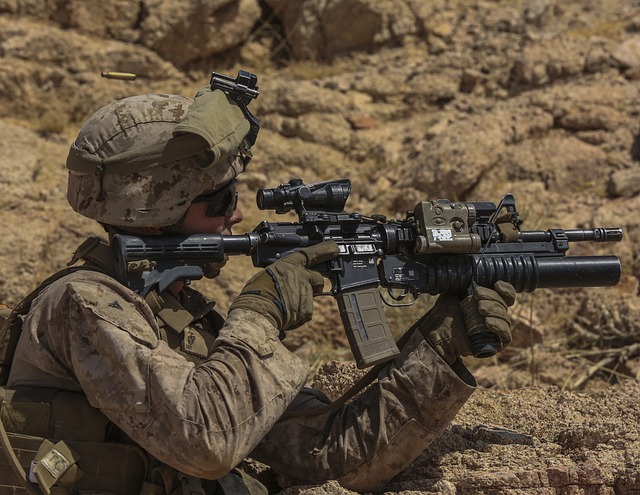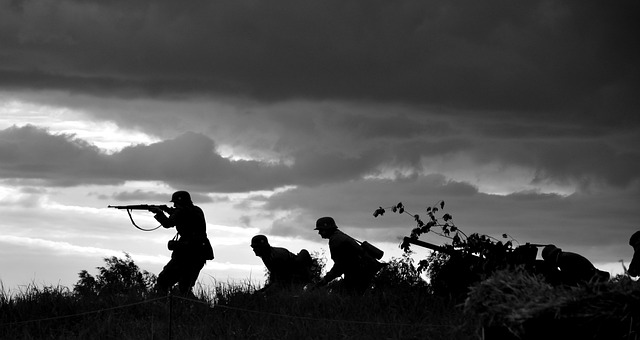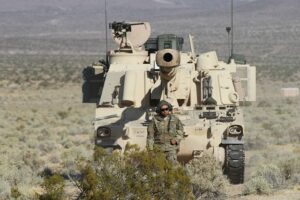
The US Army National Guard's Flag Folding Ceremony is a deeply symbolic tradition, rich with historical significance and reflecting the values of honor, courage, and preparedness. This 13-fold ritual, conducted by Honor Guards, each fold representing specific aspects of American values such as life, faith, leaders, independence, and eternal life. The final fold honors the 13 original colonies that formed America. The ceremony concludes with placing the flag on a veteran's casket or at their gravesite, symbolizing gratitude and respect for their service. It serves not only as a solemn tribute but also as an educational tool to instill appreciation for the guard's historical roots and principles. The distinctive emblem of the Minuteman and the motto "Always Ready" on the flag underscore the ceremony's message, ensuring these core values are remembered and perpetuated in public memory. This practice, which has its origins in a directive by George Washington, continues to evolve while retaining its symbolic significance, resonating with America's founding ideals and values. The US Army National Guard Flag Folding Ceremony stands as a testament to the sacrifices made by soldiers and is an integral aspect of military life, reflecting the guard's dedication to preserving American traditions and honoring those who defend our nation.
honor, respect, tradition, US Army National Guard, flag folding ceremony, protocol, symbolism, historical significance, ritual, guide, understanding.
The US Army National Guard Flag Folding Ceremony stands as a poignant tribute to service and sacrifice, encapsulating the honor and respect afforded to those who serve. This article delves into the profound significance and meticulous protocol of this time-honored tradition, offering a step-by-step guide to the process that has been passed down through generations. We will explore the historical context that shaped this ritual and unravel the symbolism inherent in each deliberate fold, ensuring a deep appreciation for the ceremony’s meaning and its place within the US Army National Guard’s legacy.
- The Significance and Protocol of the US Army National Guard Flag Folding Ceremony
- Step-by-Step Guide to the Traditional Process of Folding the US Army National Guard Flag
- Historical Context and Evolution of the Flag Folding Ritual within the US Army National Guard
- Understanding the Symbolism Behind Each Fold in the US Army National Guard Flag Ceremony
The Significance and Protocol of the US Army National Guard Flag Folding Ceremony

The US Army National Guard Flag Folding Ceremony is a solemn and symbolic practice steeped in tradition and significance. This ritual, involving the precise folding of the flag thirteen times, is conducted to honor veterans and the nation’s fallen heroes. Each fold represents a specific aspect of freedom and its cost: the first fold signifies life and the second, faith in living; the third represents the leaders in the armed forces; the fourth symbolizes our nation, the fifth points to our independence; and so on, culminating in the thirteenth fold, which stands for eternal life and memorializes those who have given their lives in service. The protocol of this ceremony is meticulously followed by trained individuals, known as Honor Guards, who ensure each fold is executed with precision and respect. The ceremony concludes with the flag being laid ceremoniously upon the veteran’s casket or a podium, serving as a poignant tribute to their service and sacrifice. The US Army National Guard Flag, with its distinctive emblem of the Minuteman and the motto “Always Ready,” becomes a focal point of gratitude and respect, allowing communities to pay homage in a tangible and deeply meaningful way. This ceremony is not just an act of remembrance but also an educational tool that conveys the values and history of the United States Army National Guard. It encapsulates the dedication, honor, and courage inherent in military service, ensuring that these values are upheld and remembered.
Step-by-Step Guide to the Traditional Process of Folding the US Army National Guard Flag

The “folding of the flag” ceremony is a poignant and respectful tradition within the US Army National Guard, symbolizing the folding of the American flag at military funerals. This meticulous process culminates in a triangular shape, representing dignity, honor, and a reminder of the ideals for which soldiers gave their lives. To execute this traditional process correctly, one must follow a precise sequence of steps.
Begin by holding the flag firmly by Anthem (canton) with the star field facing upward. Fold the lower stripe upward over the field of stars, and then fold the entire flag in half lengthwise, maintaining the outside edges straight. Next, fold the uppermost blue field to the first fold, creating a narrow triangle, followed by folding the outer edge of this triangle inwards towards the first fold line. Continue folding the outer edge inward in a series of triangles until you reach the end of the flag. Each fold should be tight and even, resulting in a neat, triangular shape. The final fold should leave a blue field of stars on the outside and a field of red and white stripes inside the folded flag, ready to be presented with honor and respect at a military ceremony. This process not only honors those who have served but also educates viewers on the significance of each deliberate movement.
Historical Context and Evolution of the Flag Folding Ritual within the US Army National Guard

The tradition of folding the flag, a poignant symbol of national pride and honor in the United States, is deeply rooted in military protocol and ceremonial practice. The US Army National Guard has a distinguished history of upholding this ritual, which dates back to the early 19th century when George Washington directed that our country’s flag be respectfully laid away. Over time, the method of folding the flag evolved from a simple gesture of respect into a precise 13-fold ceremony, symbolizing the 13 original colonies. This meticulous process is steeped in symbolism; each fold represents a different aspect of freedom and valor. The US Army National Guard has consistently honored this tradition during military ceremonies, funerals, and other significant events.
As the nation’s oldest military force, the US Army National Guard has played a pivotal role in both peacetime support and combat operations across several conflicts. The flag folding ritual has evolved alongside the guard, adapting to reflect the changing nature of American society while maintaining its core significance. Today, this ceremony is performed with great reverence by members of the US Army National Guard, serving as a tangible connection to our country’s history and values. The “folding of the flag” has become a cherished aspect of military protocol, one that continues to remind us of the sacrifices made by those who have served and are currently serving in defense of our nation’s ideals and freedoms.
Understanding the Symbolism Behind Each Fold in the US Army National Guard Flag Ceremony

The “folding of the flag” ceremony conducted by the US Army National Guard is steeped in symbolism, each fold representing a specific aspect of the nation’s values and history. As the flag is meticulously folded into a triangle, with each precise movement, the following elements are honored: the first fold signifies life and purity; the second, faith and belief; the third, hopes and aspirations; the fourth, strength, courage, and guidance; the fifth, valor and wisdom; and so on. Each of the thirteen folds corresponds to a different aspect of American principles. For instance, the seventh fold is symbolic of peace and goodwill, while the eighth represents separation of church and state, a cornerstone of American democracy. The twelfth fold honors the 13 original colonies that declared their independence from British rule. This ceremonial practice not only pays homage to the nation’s founding ideals but also provides a tangible connection to the history and heritage of the US Army National Guard, reminding all in attendance of the sacrifices made by those who served to preserve freedom and unity. The ceremony concludes with the flag being laid upon the coffin or at the gravesite of the deceased, symbolizing the final rest and tribute to a soldier’s service and sacrifice. This ritual, imbued with meaningful significance, is a poignant reminder of the values for which American soldiers have fought and died.
The US Army National Guard Flag Folding Ceremony stands as a poignant and enduring tradition, steeped in significance and solemnity. Each deliberate fold embodies a layer of the guard’s storied history and unwavering commitment to service. This article has illuminated the protocol and symbolism behind this ritual, offering readers an insightful journey through its historical context and evolution. As a tribute to those who have served, the ceremony remains a powerful gesture of respect and remembrance. For anyone seeking to honor the sacrifices made by members of the US Army National Guard, understanding this tradition is both enlightening and impactful. The folded flag, a testament to valor and dedication, encapsulates the essence of American guardianship and the enduring spirit of those who stand ready to defend our nation’s freedoms.







